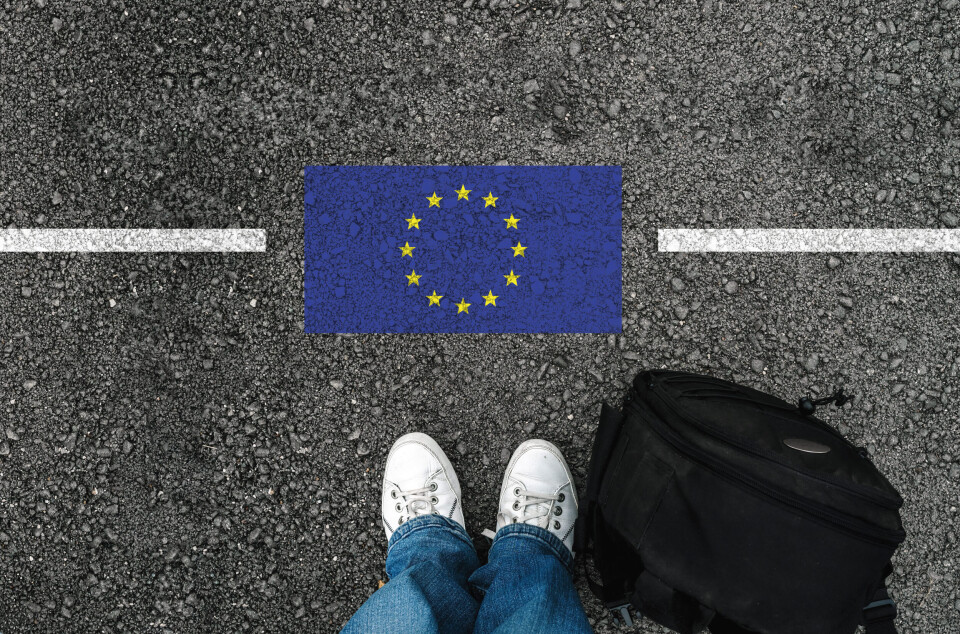-
Ryanair confirms routes to Dole-Jura airport maintained in summer 2026
Airline previously said that more routes to France will be axed next year
-
Solutions ‘coming early in 2026’ to EES issues at French airports
European Commission denies claims of three-hour ‘peak time’ queues
-
‘I saw flames’: Air France plane makes emergency landing in Lyon after technical fault
Flight carrying 173 passengers to Ajaccio diverted to Lyon-Saint-Exupéry on Saturday
New European Entry/Exit System: 9 key things to know in advance
These digital EU border checks are set to come into force in 2024. Here is how they will work

The new European Entry/Exit System (EES) is set to come into force for non-EU citizens entering the EU, including from the UK, in autumn 2024. We answer key questions about it and how it will work.
What is the new European Entry/Exit System (EES)?
The EES is a digital system which will track the arrivals and departures of non-EU visitors to the Schengen area. It is not a physical document and there is no charge for joining it.
It will track travellers who are coming for short stays, for example UK tourists and second-home owners (and others from ‘visa waiver’ countries such as the US) who are using their entitlement to stay for up to 90 days in any 180-day period.
It will not be aimed at people with long-stay visas and/or residency cards but it will apply to people on short-stay visas where they are of a nationality where these are required.
The EES will come into play every time a non-EU citizen crosses an EU external border (note, however, that it will also apply in the UK at Dover, London St Pancras and Folkestone, where there are French checks for people boarding ferries and trains). Refusals of entry will also be recorded.
The EES is intended to make it easier to detect travellers using fake passports and to keep track of those who have no right to enter the EU or who stay in the zone for too long.
Many delays have impacted the rollout of the EES, however the latest information from the European Unions says it will come into force in autumn 2024, after the 2024 Paris Olympics and Paralympics.
What data will the EES involve?
Scans of fingerprints will be required (apart from for people needing short-stay visas who will already have provided these), as well as a photo on a traveller’s first entry after the system launches.
Photos will be taken at the border, you will not have to bring one with you and at present there is nothing planned for the launch which would allow for any data to be provided in advance of arrival.
Some entry points, including large airports, are expected to have pre-registration booths for collecting data from visitors, where, notably, a photo could be taken before they arrive at a border desk.
Significant delays are expected immediately after the launch of the EES, as this information is gathered and the system gets going.
Read more: French airports worried about extra waiting due to EU Entry/Exit plan
Passports will also be scanned to log a holder’s movements, replacing the need for a passport stamp, and their identity will be checked against a security list.
Data from passports such as passport number and date of birth will be recorded.
The records will be kept for three years from the data first recorded (unless no date of exit is recorded, in which case they are kept for five years).
The data will be automatically erased once the time limit passes.
Anyone who refuses to have this data taken will be denied entry.
Read more: Must British EU residents give biometric data in new border controls?
What about non-EU nationals who are family members of EU nationals?
They will still need to use EES but are not subject to the 90 days rule if they stay on in an EU country with their EU partner beyond this (however they do have to apply for a residency permit if staying more than three months).
The data of these individuals will only be stored for one year.
What about non-EU nationals who live in an EU country?
Non-EU nationals who have official residency in an EU country will be exempt.
They are also exempt from the 90-day limit.
Will EES make border checks faster?
The EU has stated that the main aim of the EES is to save time. Yet, some have warned that the new system may initially cause long queues and waits at airports, due to the extra information to be collected.
However, once most passengers are ‘in the system’ it is hoped this will be eased, as their entry and exit on future occasions will be faster.
It is also hoped that eventually the whole system could be automated for those who have biometric passports (which includes all recent UK passports). However, at present, even though pre-registration booths are currently planned at some entry points, travellers will still need to pass in front of a border force security officer at a desk for final checks.
Read more: Longer waiting times expected due to new EU border checks
Which European countries does the EES apply to?
Countries that will use the EES system include Austria, Belgium, Croatia, Denmark, France, Greece, Iceland, Italy, Liechtenstein, Malta, Portugal, Spain, and Switzerland.
The full list of 29 countries can be seen here. The 90-days-in-180-days limit applies to all of these countries.
Cyprus and Ireland are both countries of the EU but are not in the Schengen area and will continue to stamp passports manually.
Can I see EES documents and check my day limit?
Yes. Once the system is operational, you will be able to receive information on the remaining duration left on your authorised stay from passport control officers.
There will also be an online tool available that will let you consult your records and check your limit.
What happens if people overstay?
Those who stay longer than allowed will be identified as an ‘overstayer’. Your data will be automatically added to an ‘overstayer’ list, visible to relevant authorities, including passport control and immigration officers.
You risk fines or other sanctions. In some cases you could even be prevented from entering the EU in future.
However, if you can provide proof that you stayed due to unforeseeable circumstances beyond your control, such as hospitalisation due to a serious illness or injury, your data may be amended and you may be removed from the ‘overstayer’ list.
Is the EES the same as Etias?
No, but the Etias (European Travel Information and Authorisation System) is closely linked to the EES.
Etias will be an online visa-waiver pre-approval for non-EU citizens. It will cost €7 for adults aged 18 to 70 and will last three years or until the person’s passport expires.
Minors and those over 70 will also need an Etias even if they do not need to pay. In the case of under-18s, an adult parent or guardian will need to apply for them.
The Etias will require applicants to submit their name, address, and contact details, parents’ names, passport details, educational level, and occupation, and country and address of first intended stay.
It will also ask for details of any criminal convictions, travel to war zones, and if you have been subject to an order to leave an EU country.
People will be advised to apply before booking travel and accommodation in case of delays in approval (the application requires your ‘travel plans’ but it is fine if these later change).
Approval will take from ‘minutes’ to four days. In more complex cases, you might be asked for extra information or to attend an interview, which could take up to another 30 days.
You will be able to apply through an official online application (that is not yet available). Other websites may offer to help you with your application, but the EU is already warning of the potential danger of using unaffiliated sites.
Etias is scheduled to rollout in the first half of 2025, around six months after the EES.
Related articles
New expected timeline for EU’s EES and Etias border systems
‘Life-changing’: Second-home owners on French Senate’s visa support
























